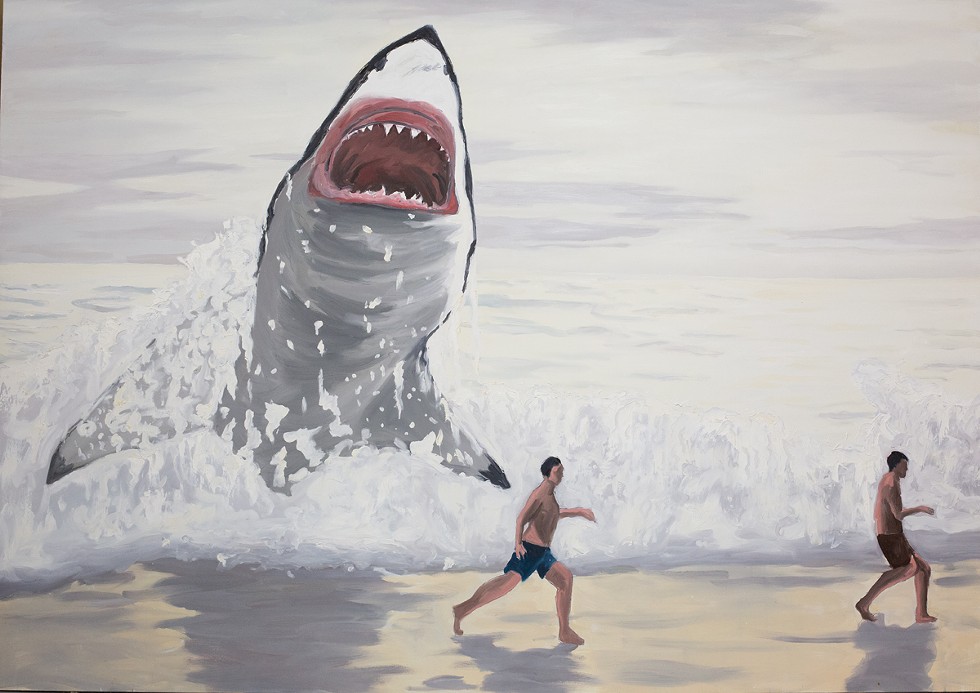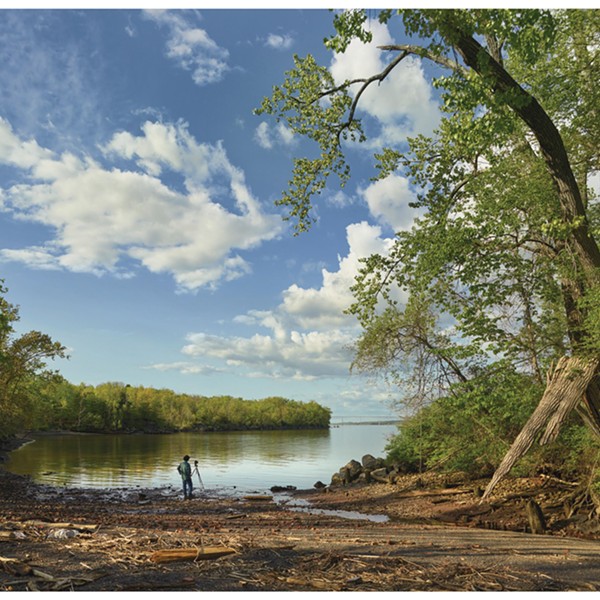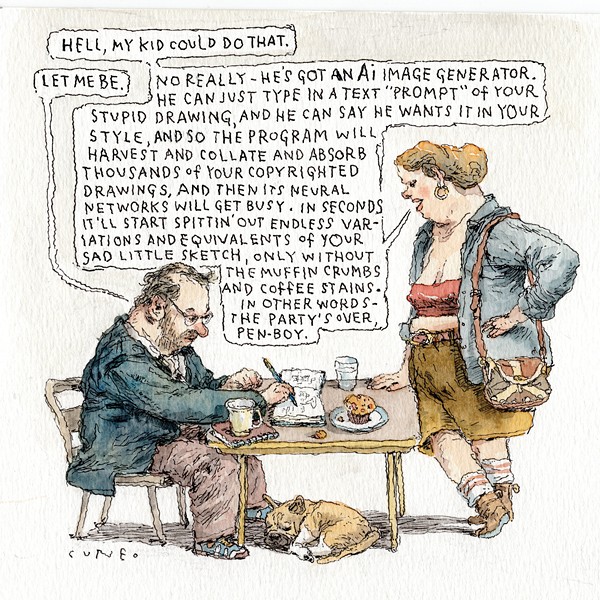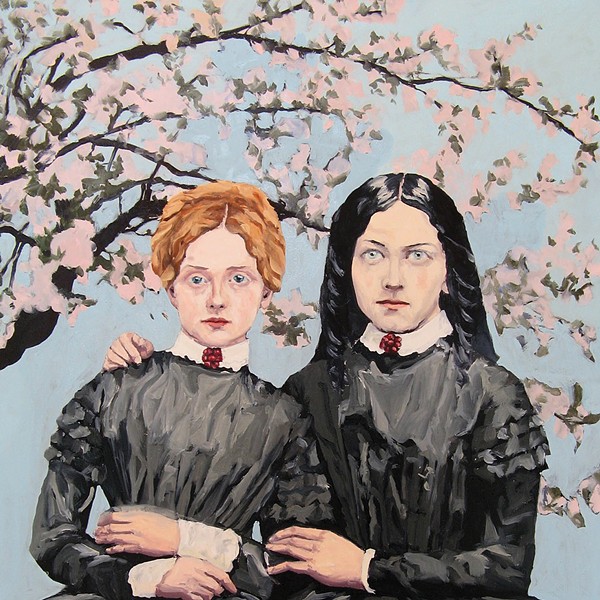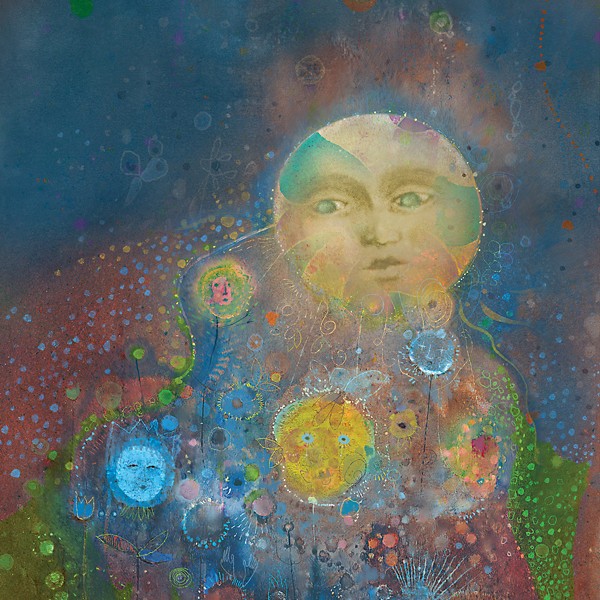Esopus-based artist Richard Bosman’s Beach playfully contrasts the joy of summertime at the coast with the primordial terror of a great white shark leaping out of the ocean at the heels of a running figure. Is the passerby fleeing the scene or has the shark totally surprised them? It’s hard to tell, but it’s at once lighthearted and dire, especially given recent shark attacks on the Eastern Seaboard this summer.
Having spent his teenage years in Perth, Australia, swimming in shark-infested sea and surf, Bosman could not help but be influenced by the hidden dangers lurking under the waves. “I was oblivious of the danger from sharks,” Bosman says. “Ignorance is bliss! It was only after seeing Jaws and Sharknado that I became fearful of the unseen terror lurking below the surface. After all, we’re swimming in their natural element. The conceit of the painting is that the shark is land bound and out of its element and not the other way around.”
Born in Madras, India (now Chennai), Bosman also spent time in Egypt as a child. “I have been to every continent except Antarctica,” he says. His mother is Australian and his Dutch father worked as a sea captain, so the ocean has always loomed large for him. “The sea has often been the subject of my paintings,” Bosman says. “I endured multiple long sea voyages as a child and crossed the equator a number of times, which makes me an official son of Neptune. Since antiquity sea monsters have been depicted in art. There’s something profoundly unsettling about an unseen monster hidden below the surface of the sea.”
After attending the Byam Shaw School of Art in London from 1964 to 1969, Bosman settled in New York City. He attended the New School until 1971, later studying at the Skowhegan School of Painting and Sculpture in Maine.
In late `60s-early `70s, Bosman lived near Chinatown in Manhattan and absorbed Chinese comic art. “It was not as stylized as today’s manga but had a storyboard quality. Seventies art was very abstract, and nihilistic. Pop art was a departure from the dogma of minimal abstract art and included a social and political aspect that I found exciting,” he explains.
Bosman’s style is often both comic and comical, a trait not often found in contemporary art. “Why shouldn’t art be humorous as well as serious? Some of Goya’s early work is humorous,” he says.
As a global citizen, Bosman also brings an outsider’s perspective to his portrayals of the American experience. Violence in real life and in cinema has affected his work. “I could see things a local might not see. There were many shootings and muggings in New York City at the end of the 1960s, which was quite shocking to me,” he says.
Typical in his work since the `80s is an emphasis on figurative art, which allowed him to touch upon social, political, and cultural issues.
“It was very freeing and opened up a whole new set of possibilities. I have always loved making prints which force the image to be reduced to its essence,” he says.
Regarding what he’s trying to communicate, Bosman says, “I think artists would often rather not know until after the fact. Otherwise, you can’t really do anything creative. It’s kind of a self-discovery.”
Beach is featured in “Summer Disaster Show” at the Private Public Gallery in Hudson, which also contains works by Melora Kuhn, Mark Swanson, James Casabere, Heide Fasnacht, and others. The exhibit is up through September 10.
When asked about his legacy, Bosman is somewhat ambivalent. “I don’t have a role in that,” he says. “I might be understood for five minutes and then forgotten. One just does what they do, and it’ll have relevance or it won’t. All you can do is live in the present, if you’re lucky.”







